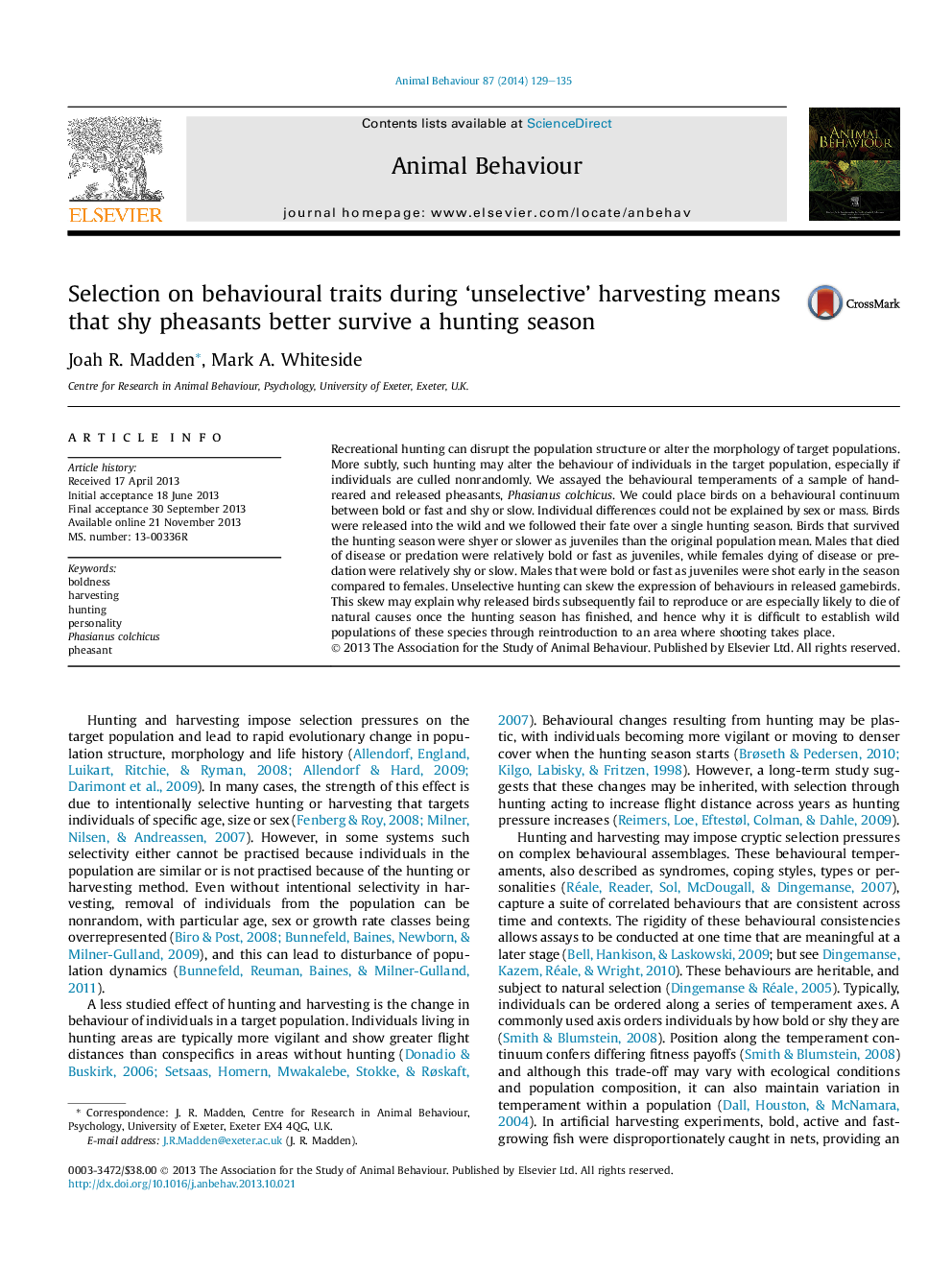| Article ID | Journal | Published Year | Pages | File Type |
|---|---|---|---|---|
| 8490842 | Animal Behaviour | 2014 | 7 Pages |
Abstract
Recreational hunting can disrupt the population structure or alter the morphology of target populations. More subtly, such hunting may alter the behaviour of individuals in the target population, especially if individuals are culled nonrandomly. We assayed the behavioural temperaments of a sample of hand-reared and released pheasants, Phasianus colchicus. We could place birds on a behavioural continuum between bold or fast and shy or slow. Individual differences could not be explained by sex or mass. Birds were released into the wild and we followed their fate over a single hunting season. Birds that survived the hunting season were shyer or slower as juveniles than the original population mean. Males that died of disease or predation were relatively bold or fast as juveniles, while females dying of disease or predation were relatively shy or slow. Males that were bold or fast as juveniles were shot early in the season compared to females. Unselective hunting can skew the expression of behaviours in released gamebirds. This skew may explain why released birds subsequently fail to reproduce or are especially likely to die of natural causes once the hunting season has finished, and hence why it is difficult to establish wild populations of these species through reintroduction to an area where shooting takes place.
Related Topics
Life Sciences
Agricultural and Biological Sciences
Animal Science and Zoology
Authors
Joah R. Madden, Mark A. Whiteside,
